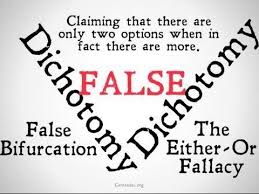
7 skills you need for a perfect SAT Writing/ACT English score
If you google “perfect score on SAT writing” (or “perfect score on ACT English”) you’ll probably come up with a couple dozen hits that make it seem as if accomplishing that feat is merely a matter of learning a few simple rules.
Now, if you have an outstanding ear and a solid basic knowledge of grammar, that could indeed be the case. And to be sure, the SAT and ACT both test a limited number of concepts (somewhere between 10 and 20, depending on how you count) over and over again, in very predictable ways. Within those 10-20 rules, however, there are many variations, and it’s always possible for rules to be tested or combined in slightly new ways. And rules that initially seem simple and straightforward can have very challenging applications.
Passages frequently mention topics, individuals, and places that most students aren’t particularly familiar with. It can be hard to worry about subject-verb agreement when you’re trying to puzzle through sentences that refer to multi-syllabic chemical compounds.
Given that, I’ve decided to compile a different sort of list. It is not a list of rules tested on the multiple choice grammar portion of the SAT and the English portion of the ACT. You can find those in my complete list of SAT and ACT grammar rules. Rather, it is a list of skills that you must have in order to apply those rules effectively.
1) Recognizing prepositions and prepositional phrases
Prepositions are “location” and “time” words such as to, of, by, for, from, with, and about.
Prepositional phrases are phrases that begin with prepositions and include nouns, pronouns, and adjectives, e.g. on the shelf, by the author, with my father.
Both the SAT and ACT test a couple of errors involving prepositional phrases.
Most frequently, they test the “no comma before or after a preposition” rule — if you can recognize prepositions, this rule is extremely easy to apply. If you can’t, you have to puzzle things out by ear.
Prepositional phrases are also used to distract from subject-verb agreements, e.g. The forests of central Mexico provides an ideal habitat for Monarch butterflies.
In addition to knowing what prepositional phrases are, you must be able to recognize them so securely and consistently that you can remember, under pressure, to cross them out of potentially long and complicated sentences in order to check for disagreements.
2) Knowing the definitions of transition words
This is a big one. You probably don’t have any trouble with however and therefore, but what about less common transitions such as consequently, moreover, and nevertheless?
If you don’t know the literal meanings of these words as well as what sorts of relationships they’re used to indicate, you’ll have difficulty eliminating wrong answers and recognizing right ones. You might also start relying on how they sound (weird), and that’s usually a recipe for disaster.
3) Recognizing comma splices involving pronouns
A comma splice is formed when a comma rather than a period or semicolon is placed between two complete sentences. When this error involve two clearly separate sentences, it is generally easy to recognize; however, one very common problem arises when the second sentence begins with a pronoun (he, she, it, they, one) rather than a noun. Because the second sentence does not make sense out of context, many people falsely believe it cannot be a sentence.
Incorrect: The forests of central Mexico are warm and filled with a wide variety of plant life, they provide an ideal habitat for Monarch butterflies.
Correct: The forests of central Mexico are warm and filled with a wide variety of plant life. They provide an ideal habitat for Monarch butterflies.
Correct: The forests of central Mexico are warm and filled with a wide variety of plant life; they provide an ideal habitat for Monarch butterflies.
4) Being willing to read both forwards and backwards
One of the most important things to understand about SAT Writing/ACT English is that errors are context-based. As a result, the underlined portion of the sentence may not give you the information you need to answer a given question. Rather, the necessary information may be located elsewhere in the sentence or paragraph.
This skill is key for answering rhetoric questions that ask you to add, delete, or revise information. If you are asked about a topic sentence, for example, you must jump ahead and read the body of the paragraph in order to determine what topic the first sentence of the paragraph should introduce.
For example:
The exact elevation of Mt. Everest’s summit has long been a matter of controversy. In July, the warmest time of the year, temperatures average only about ?2°F on the summit; in January, the coldest month, summit temperatures average ?33 °F and can drop as low as ?76 °F. Storms can come up suddenly, and temperatures can plummet unexpectedly. The peak of Everest is so high that it reaches the lower limit of the jet stream, and it can be buffeted by sustained winds of more than 100 miles per hour. Precipitation falls as snow during the summer monsoon, and the risk of frostbite is extremely high.
Which of the following is the most effective introduction to the paragraph?
A. NO CHANGE
B. The climate of Mt. Everest is extremely hostile to climbers throughout the year.
C. Glacial action is the primary force behind the erosion of Mt. Everest and surrounding peaks.
D. The valleys below Everest are inhabited by Tibetan-speaking peoples.
In order to determine the answer, you must temporarily ignore the first sentence and instead focus on the rest of the paragraph — you cannot know what the topic sentence should be about until you know what sort of information it introduces. In this case, the paragraph discusses the extremely cold temperatures and dangerous weather conditions present on Mt. Everest. That corresponds to the phrase “hostile climate” in (B). Although the other answers refer to Mt. Everest, they are all off-topic.
5) Recognizing non-essential clauses
Simply put, a non-essential clause is a clause that can be eliminated from a sentence without affecting its essential structure or meaning. These clauses can be set off with either commas, dashes, or parentheses, but the same type of punctuation must be used at the beginning and end of the clause.
Correct: The peak known as El Capitan, which is considered by the majority of expert climbers to be the epicenter of the rock climbing world, is a vertical expanse stretching higher than the world’s tallest building, the Burj Khalifa in Dubai.
Correct: The peak known as El Capitan – which is considered by the majority of expert climbers to be the epicenter of the rock climbing world – is a vertical expanse stretching higher than the world’s tallest building, the Burj Khalifa in Dubai.
Correct: The peak known as El Capitan (which is considered by the majority of expert climbers to be the epicenter of the rock climbing world) is a vertical expanse stretching higher than the world’s tallest building, the Burj Khalifa in Dubai.
Incorrect answers to questions testing non-essential clauses often omit one or both of the punctuation marks surrounding the clause. They may also “mix and match” — for example, use a dash to end a non-essential clause begun by a comma, or vice versa.
To identify what type of punctuation should be used and where it should be placed, you must be able to identify where the non-essential clause logically begins and ends.
For example:
A mathematician, inventor, and philosopher, Charles Babbage, considered by some to be a “father of the computer” is credited with inventing the first mechanical computer.
A. NO CHANGE
B. computer is credited,
C. computer – is credited
D. computer, is credited
To answer this question, you must be able to recognize that the clause considered by some to be a “father of the computer” can be removed from the sentence without affecting its basic structure or meaning (A mathematician, inventor, and philosopher, Charles Babbage…is credited with inventing the first mechanical computer).
6) Distinguishing between number and tense
Number = singular or plural
Tense = past, present, or future
Consider the following sentence:
Incorrect: The relationship between goby fish and striped shrimp are truly symbiotic, for neither can exist without the other.
When asked to correct it, many students will simply change are to were. Not only does that not fix sentence, it misses the entire point of what’s being asked. And that becomes a problem when you encounter questions like this:
The relationship between sharks and remora fish are truly symbiotic, for neither can exist without the other.
A. are
B. is
C. have been
D. were
If you don’t clue into the fact that the verb must agree with the subject, the singular noun relationship, you have no real way of deciding between the answers.
Note that to answer subject-verb agreement questions, you also need to be able to distinguish between singular and plural verbs.
Singular verbs end in -s (e.g. he talks)
Plural verbs do not end in -s (e.g. they talk).
Many people associate -s with plural forms because, of course, plural nouns end in -s. Making the switch to verbs can be confusing, particularly when sentences are long and complicated, and subjects are separated from verbs. If you have a tendency to forget, write this rule down on the front of your test.
7) Recognizing formal vs. informal writing (register)
Questions testing diction, or word choice, appear frequently on both the SAT and the ACT. In some cases you must choose the word or phrase with the most appropriate meaning, while in others you must choose the word or phrase with the most appropriate tone or register — that is, the proper degree of formality or informality.
Passages are almost always written in a straightforward, moderately serious tone. Correct answers to register questions are consistent with the tone, whereas incorrect answers are typically too casual or slangy. They may also be excessively formal, but this is less common.
For example:
As a result of variations in snow height, light refraction, and gravity deviation, the exact elevation of Mt. Everest’s summit has long been a topic of debate. Beginning in the 1950s, numerous attempts were made to measure the summit’s true height.
A. NO CHANGE
B. a thing that people fight about.
C. a matter of great disputation.
D. the cause of a bunch of arguments.
In the above question, (B) and (D) are both awkward and overly casual, employing “vague,” highly informal words such as thing and bunch, whereas disputation in (C) is excessively formal. (A) is correct because it is consistent with the straightforward, middle-of-the-road tone found in the rest of the passage.
